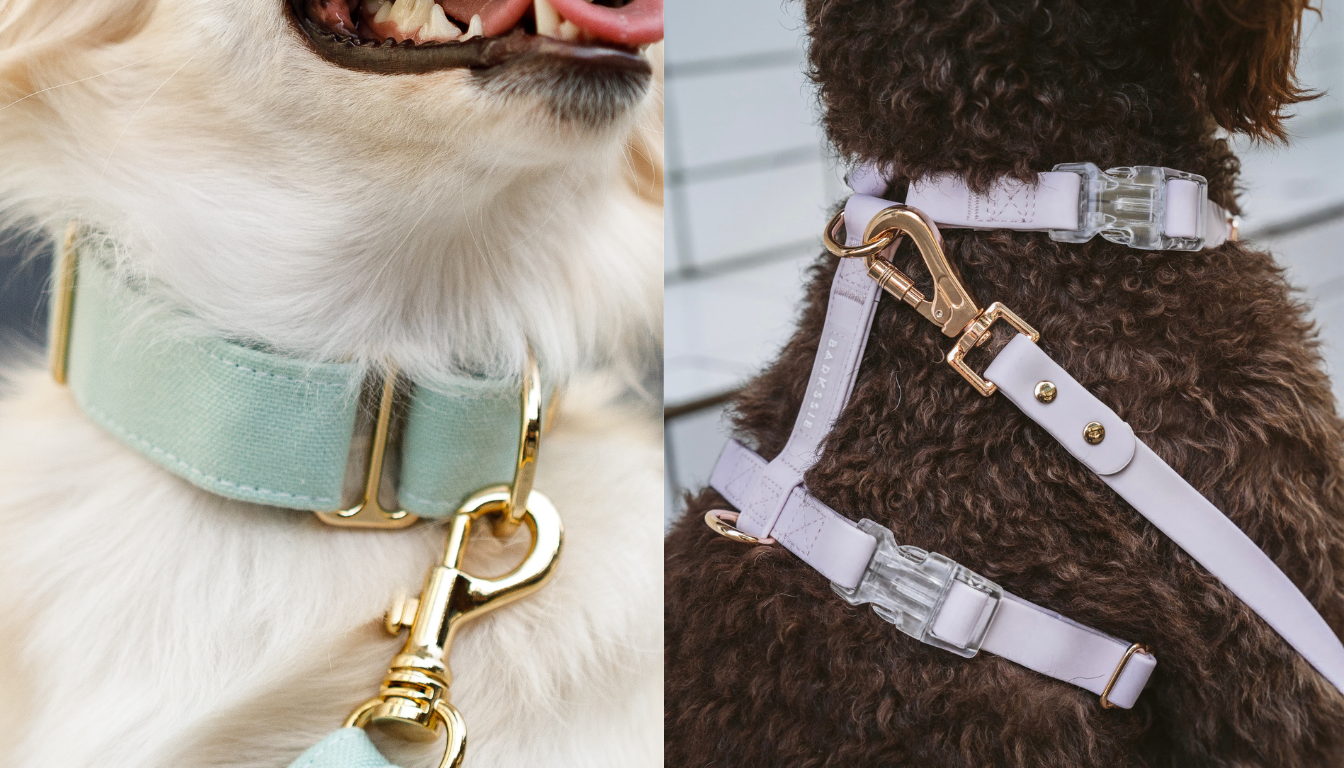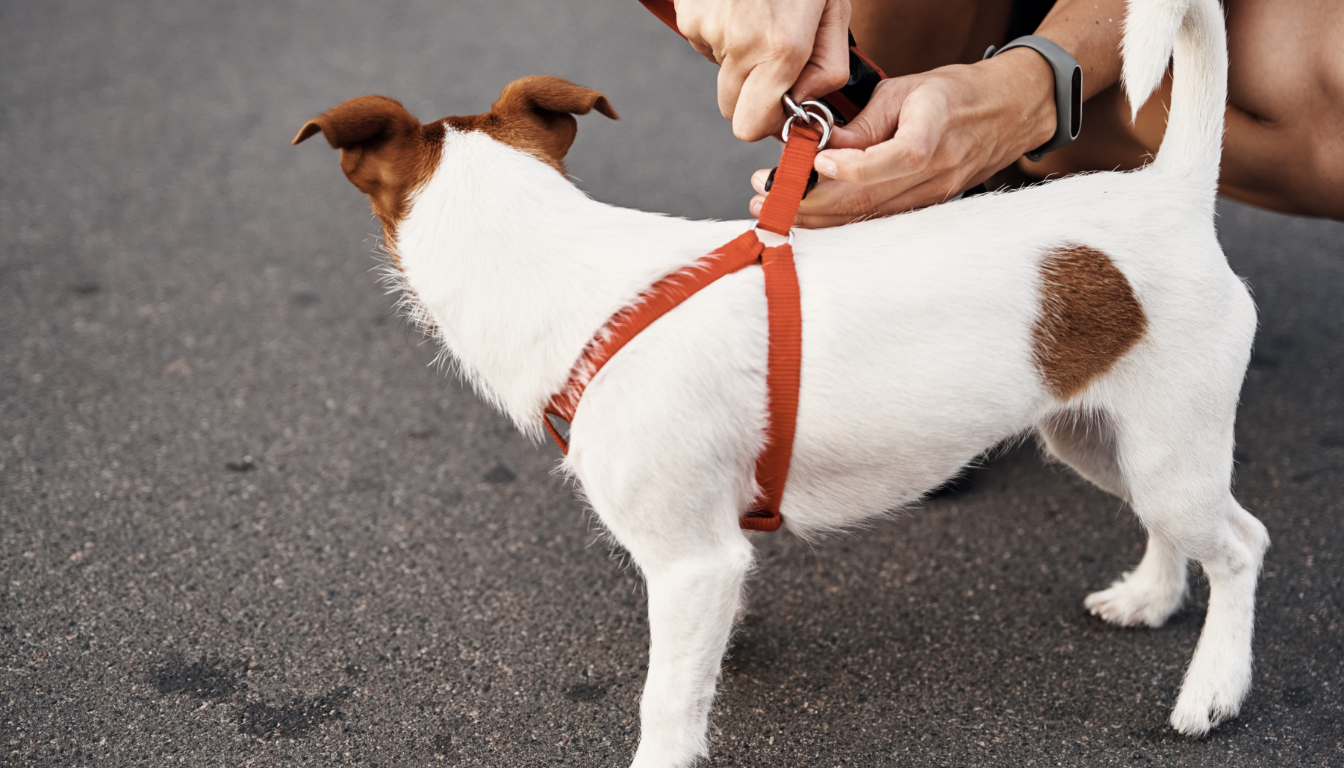Article: Is a Harness Better Than a Collar for Your Dog’s Health?

Is a Harness Better Than a Collar for Your Dog’s Health?
Thinking about whether a harness is better than a collar for your dog's health is key. In Australia, about 60% of dog owners use collars for walks. But, many dog trainers and vets suggest harnesses for health and safety reasons.

Collars can put too much pressure on a dog's neck and spine. This can cause nerve damage and limit blood flow. Studies say up to 50% of small dogs might get throat damage from collars when they pull.
Harnesses spread the force across a dog's body. This lowers the risk of injury, like to the trachea and neck vertebrae.
Research shows harnesses can cut neck injury risks by up to 80% in dogs that pull. Also, about 70% of owners say their dogs are more comfortable and easier to control with harnesses. Harnesses are safer and more comfy for dogs that pull or have breathing problems, say experts.
Understanding the Differences Between Dog Harnesses and Collars
Choosing between a dog harness and collar is key. Each has its own benefits and downsides. It's important to think about your dog's needs, breed, and how they behave.

Design and Functionality Variations
Dog harnesses and collars are different in design and use. A collar is a simple loop for the neck and leash attachment. A harness, on the other hand, wraps around the body. It spreads the force across the chest and shoulders.
This design helps avoid neck and spine strain. It's great for dogs that pull on the leash.
The Purpose of Collars
Collars are mainly for ID and leash attachment. They're light and easy to wear. But, they can cause neck strain and affect the thyroid gland.
They can also lead to nerve damage. Dogs that pull on the leash are at higher risk of neck and spine injuries.
The Purpose of Harnesses
Harnesses are better for control and safety. They're great for leash training and for dogs that pull. They distribute force evenly, making them safe for brachycephalic breeds, puppies, and pullers.
A good harness lets your dog move freely. It's also better for dogs with breathing problems. It reduces neck and trachea strain.
| Feature | Collar | Harness |
|---|---|---|
| Identification | Easy to attach ID tags | Can be used but less convenient |
| Control | Limited | Better control during walks and training |
| Neck Strain | Higher risk, if dog pulls | Minimises neck strain, distributes pressure |
| Comfort | May cause discomfort and irritation | More comfortable, for long walks |
| Health Risks | Neck and spine injuries, thyroid pressure | Reduced risk of injury, better for breathing |
Benefits of Using a Dog Harness
Dog harnesses offer many advantages for your pet's health and safety. They are a great choice compared to collars. Knowing the benefits can help you decide what's best for your dog.
Reduced Strain on Dog’s Neck and Throat
Dog harnesses reduce strain on your dog's neck and throat. Unlike collars, they spread the pressure evenly across the chest. This is good for dogs with neck injuries or arthritis.
It also prevents injuries when using a seatbelt in the car. A well-fitting harness is key to avoiding these dangers.

Increased Control and Safety
Harnesses offer better control and safety. They are great for big or energetic dogs. They help manage their movements and prevent accidents.
For example, front-clip harnesses stop pulling. This makes walks better. Special harnesses ensure a secure fit.
Reflective materials and bright colours make harnesses more visible at night. This is important for safe walks in the dark.
Choosing a harness can greatly improve your dog's walks. It's a smart choice for your pet's well-being. Harnesses are better than collars in many ways.
| Feature | Collar | Harness |
|---|---|---|
| Reduces Neck Strain | No | Yes |
| Improved Control | Limited | Enhanced |
| Reduces Respiratory Issues | No | Yes |
| Visibility in Low-Light | Varies | Yes |
| Prevents Escape | No | Yes |
Dog Collar Health Concerns
Dog collars are common but can harm your pet's health. The main issue is the pressure on the neck. This can hurt blood vessels and stress the thyroid gland, leading to inflammation and hypothyroidism. The vagus nerve, important for organs like the heart and lungs, can also be damaged.
Another big problem is nerve damage. Constant pulling on a collar can harm nerves. This might cause front leg lameness and excessive paw licking. Dogs with thin necks or breathing problems are at higher risk. So, the question is: is a harness better than a collar for your dog’s health? Yes, harnesses are often safer because they spread the pressure more evenly.
Small breeds and dogs prone to breathing issues, like Pugs and Bulldogs, should avoid collars. Collars can make problems like megaesophagus, collapsing trachea, and IVDD worse. They can also block the jugular vein and carotid artery, risking head problems.
It's wise to have your dog checked by a vet or a spinal alignment expert regularly. For older or injured dogs, or those in training, a harness can provide extra support. This makes activities safer and more enjoyable. So, you might often wonder, is a harness better than a collar for your dog’s health?
Is a Harness Better Than a Collar for Your Dog’s Health?
When we ask is a harness better than a collar for your dog’s health?, we must think about many things. Many vets and experts say harnesses are better because they help your dog's health more than collars do.
Expert Opinions and Insights
Experts have a lot to say about dog harness vs collar. Studies show harnesses help avoid neck problems and breathing issues in dogs like bulldogs and pugs. Dr. Karen Becker says harnesses spread out the pressure, which helps avoid neck injuries.
Harnesses are also good for active dogs or those that pull a lot on the leash. Experts say harnesses help control bigger dogs better, making walks easier and safer for everyone.
Health Implications and Risks
Now, let's look at the health risks of collars versus harnesses. Collars can hurt dogs, causing neck injuries, spinal problems, and eye pressure in short-nosed breeds. For these dogs, harnesses are safer.
Harnesses, when fitted right, spread out the force better, reducing injury risks. But, a bad fit can cause skin problems or limit movement. It's important to get the fit just right, with advice from vets.
Choosing the Right Option for Your Dog: Collar or Harness?
Deciding between a harness or collar for your dog is key to their health and comfort. Your dog's size, breed, and health are important factors. For example, smaller breeds like dachshunds and chihuahuas are safer with harnesses to avoid throat injuries.
Brachycephalic breeds, such as pugs and bulldogs, also do better with harnesses. This is because harnesses don't put pressure on their necks, which helps with their breathing issues.
If your dog pulls a lot or has neck problems, a harness is a safer choice. Harnesses spread the force across the chest and shoulders. This reduces the risk of neck injuries.
Dogs with conditions like collapsing trachea or cervical disc disease should wear harnesses. This helps to lessen neck stress. For well-trained dogs or those who dislike harnesses, a collar is okay for short trips. Just make sure it fits right and you're watching them.
Think about what your dog needs when picking a collar or harness. Your vet can give advice based on your dog's health and body type. Some breeds, like flat-faced ones, do better in harnesses. But, a martingale collar might be good for greyhounds to stop them from slipping out.
Both collars and harnesses have their good points. Collars are simple for quick walks, but harnesses offer better control and are safer for dogs that pull or have breathing problems. The best choice really depends on your dog's specific needs and what they like to do.
FAQ
Is a harness better than a collar for your dog’s health?
Yes, harnesses are better than collars for your dog's health. They spread the force across the chest and shoulders. This reduces the risk of neck injuries and breathing problems caused by pulling on a collar.
What are the design and functionality variations between dog harnesses and collars?
Harnesses are designed to spread the force across the chest and shoulders. This gives better control and less strain on the neck. Collars, worn around the neck, are good for attaching ID tags but can be risky if your dog pulls a lot.
What is the primary purpose of dog collars?
Dog collars are mainly for identification and attaching leashes. They're handy for short walks but can strain the neck if your dog pulls hard.
What are the main purposes of dog harnesses?
Harnesses offer better control and safety during walks. They reduce the risk of neck and throat injuries. They're great for leash training, for dogs that pull, and for larger breeds and those with breathing issues.
How do dog harnesses reduce strain on the neck and throat?
Harnesses spread the force across the chest and shoulders, not the neck and throat. This is key for dogs that pull or have breathing problems, as it lowers injury risk.
In what ways do harnesses increase control and safety during walks?
Harnesses give better control by letting you steer your dog without neck pressure. This is useful for training, managing big breeds, and stopping leash aggression. It offers freedom without discomfort.
What health concerns are associated with dog collars?
Collars can cause health issues like compressed blood vessels, thyroid gland pressure, and nerve damage from pulling. These risks are higher for breeds with delicate necks or breathing problems.
What are expert opinions and insights on using harnesses versus collars?
Experts mostly recommend harnesses. Studies show harnesses reduce risks like neck strain and tracheal collapse, common in collar-wearing dogs that pull. Vets often suggest harnesses for dogs with breathing issues or those in active activities.
What are the health implications and risks of using a collar for your dog?
Using a collar, if your dog pulls, can lead to serious health issues. These include nerve damage, compressed blood vessels, and thyroid gland pressure. These are major concerns for breeds with sensitive necks or breathing problems.
How should you choose between a dog collar and a harness?
The choice depends on your dog's size, breed, and lifestyle. Harnesses are better for active dogs, heavy pullers, or breeds prone to neck injuries. They offer safer control and reduce injury risk, which is key during training. Collars might be okay for calm dogs who don't pull or for short walks, if they fit right.
